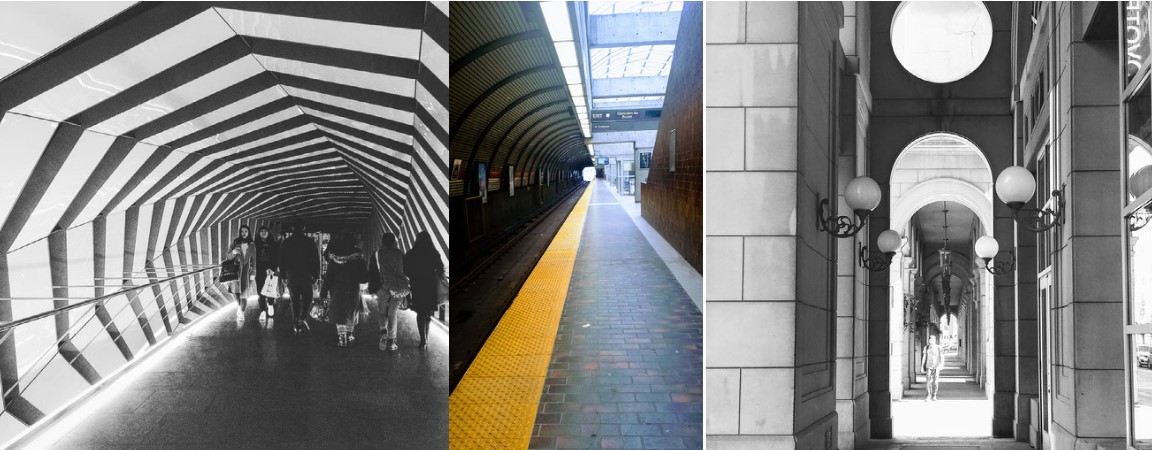Artist’s statement- Carla Lopez
Passages and Portals
At one time, my everyday life centered around the downtown Toronto core, which usually meant I was constantly travelling from point A to point B throughout the course of my day. Combined modes of transportation had me in a state of constant flux. I was always moving, even when sitting still on the train. Often I found myself thinking about how mundane commuting can be, yet there is a strangely magical element to being in transit and the ability to arrive at one’s destination sometimes within mere minutes. How quickly life can change, just as the scenery does.
I wanted to reflect that experience somehow, and chose a triptych to convey this. Each picture depicts people in transit, whether crossing the glass-encased pedestrian overpass high above the traffic on Queen Street, or just beneath the surface at Glencairn Station. The third panel takes the viewer through the arches that line the streetfront of the Novotel Hotel. Repetition is a theme all too familiar for a commuter, but have you ever stopped to consider the patterns within the portals that take you to another dimension of your reality? Next time, en route to your destination, don’t forget to appreciate the wonder of the mundane.
What is a triptych? Tate Modern describes it simply as “an artwork in three panels. The panels can be attached together or presented adjoining each other. Although traditionally applied to painting or relief-carved panels, the term has also been used to refer to artworks in other media that are formed of three panels or screens, such as video.”
Typically seen in Renaissance art, triptych masterpieces can be found in Byzantine cathedrals such as The Cathedral of Our Lady in Antwerp, Belgium. The cathedral houses four pieces from Rubens, whose work remains among the most enthralling examples of Renaissance art.
Chinese art is rich with examples of the triptych, or triad, such as the Shakyamuni Triad (Yuan Dynasty) predating the European version of the artform.
While triptychs were primarily seen as religious artwork, modern, secular examples are seen today in the forms of Instagram grid posts and comic book panel layouts. They have often been the favoured artform of renowned artists like Francis Bacon. His piece, Three Studies of Lucian Freud (1969), sold in 2013 for US$142.4 million, the most ever paid for any work of art at the time.
Needless to say, the triptych endures. It inherently beckons the observer to peer closer, to examine the images contained therein, making their own connections.


